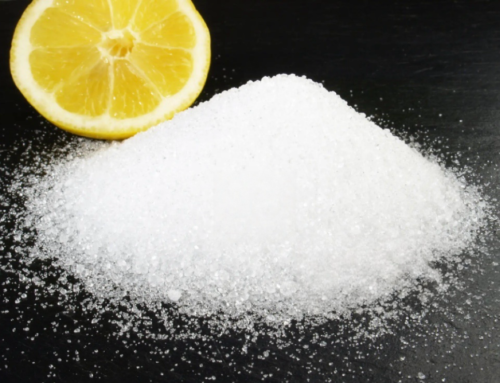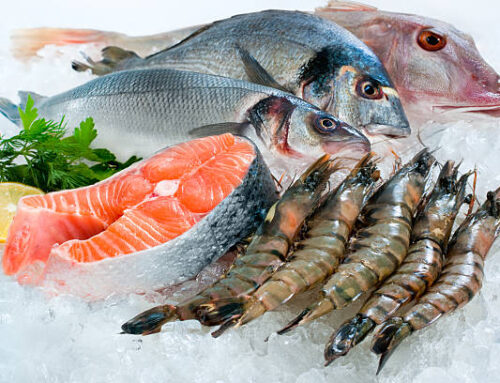Introduce:
 In the fascinating world of baking, leavening agents play a vital role in creating the light, fluffy textures in our favorite cakes, breads, and pastries. In this comprehensive guide, we delve into the world of leavening agents, exploring the different types and their science. Whether you’re a beginner or an experienced baker, this guide will give you valuable insight into the various leavening agents and their applications. Also, we will highlight the main products related to these leavening agents that our company mainly exports.
In the fascinating world of baking, leavening agents play a vital role in creating the light, fluffy textures in our favorite cakes, breads, and pastries. In this comprehensive guide, we delve into the world of leavening agents, exploring the different types and their science. Whether you’re a beginner or an experienced baker, this guide will give you valuable insight into the various leavening agents and their applications. Also, we will highlight the main products related to these leavening agents that our company mainly exports.
We will continue the blog in the order of the following questions:
- Learn about leavening agents
- Biological leavening agent
- Chemical leavening agent
- Physical leavening agent
- What are the 5 types of leavening agents?
- Are leavening agents safe?
- Our company’s main leavening agent related products
Let’s start with the first question.
Learn about leavening agents:
Raising agents are ingredients that introduce carbon dioxide gas into a batter or dough, causing baked goods to rise and rise. They work by creating air pockets in the mix, resulting in a light and airy texture. Leavening agents are mainly divided into three types: biological leavening agents, chemical leavening agents, and physical leavening agents.
Biological leavening agent:
Biological leavening agents, such as yeast and sourdough starter, rely on the action of living microorganisms. Yeast is a single-celled fungus that ferments the sugars in the dough, producing carbon dioxide as a by-product. This gas gets trapped in the gluten network, causing the dough to expand. A sourdough starter, on the other hand, is a flour and water mixture that has been fermented with wild yeast and lactic acid bacteria.
Chemical leavening agent:
Chemical leavening agents include baking powder and baking soda. Baking powder is a mixture of baking soda, an acidulant such as a cream of tartar, and a moisture absorbent such as cornstarch. When activated by moisture and heat, the acids and bases in baking powder react to release carbon dioxide gas, which causes the dough or batter to expand. Baking soda, also known as sodium bicarbonate, reacts with acidic ingredients (eg, buttermilk, lemon juice) to produce carbon dioxide.
Physical leavening agent:
Physical leavening agents incorporate air into the mix mechanically. For example, whipping egg whites or whisking butter and sugar together. The addition of air bubbles provides a light and fluffy texture to the final product. Physical leavening agents are commonly used in recipes such as soufflé, meringue, and chiffon cakes.
What are the 5 types of leavening agents?
Yeast: Yeast is a biological leavening agent that utilizes live yeast cells to ferment sugars in dough or batter, producing carbon dioxide as a byproduct. The carbon dioxide gas creates air pockets, leading to the rise and light texture of baked goods.
Baking Powder: Baking powder is a chemical leavening agent that typically contains a combination of baking soda (sodium bicarbonate), an acidifying agent (such as cream of tartar), and a moisture-absorbing agent (like cornstarch). When activated by moisture and heat, the acid and base in baking powder react to release carbon dioxide gas, resulting in the expansion of the dough or batter.
Baking Soda: Baking soda, also known as sodium bicarbonate, is another chemical leavening agent. It requires an acidic ingredient (e.g., buttermilk, lemon juice) in the recipe to react and release carbon dioxide gas. Baking soda is often used in recipes that have acidic components.
Steam: Steam is a physical leavening agent that is generated when heat is applied to moisture within the dough or batter. The steam expands and creates air pockets, resulting in a light and fluffy texture. This method is commonly used in pastries and bread products.
Air: Air is a physical leavening agent that is incorporated into the mixture through mechanical means. Techniques like creaming butter and sugar or whipping egg whites introduce air bubbles into the batter, which expand during baking, giving rise to a light texture in the final product.
These different types of leavening agents offer versatility and can be used individually or in combination to achieve desired textures and results in various baked goods.
Are leavening agents safe?
From a professional point of view, leavening agents are considered safe for consumption. Its safety has been established based on scientific research, regulatory evaluations, and industry standards. Bulking agents do not pose a significant risk to human health when used according to recommended guidelines and dosage levels. However, it must be noted that individuals with specific dietary restrictions or allergies should exercise caution and check product labels to ensure suitability. In general, leavening agents are considered safe for use in food if handled and used properly.
Our company’s main leavening agent related products:
Sodium Acid Pyrophosphate (SAPP): SAPP is a fast-acting leavening agent that reacts with moisture to release carbon dioxide. It is often used in combination with other phosphate preparations such as MCP or DCP for optimal fluffing. SAPP produces a fast, reliable fermentation, resulting in a light, airy texture for bread products.
Tetrasodium pyrophosphate (TSPP): TSPP is used as a buffer and stabilizer during bread fermentation. It helps maintain pH balance during baking, helping to improve texture and extend shelf life. TSPP is often used in combination with other phosphate leavening agents to create a balanced leavening system.
Sodium Aluminium Phosphate (SALP): SALP works by releasing carbon dioxide gas during baking, which helps bread rise and texture. It controls the release of carbon dioxide, helping the dough expand and creating air pockets, resulting in a light and airy end product. However, it is worth noting that SALP faces restrictions in some regions due to aluminum intake concerns.
Monocalcium Phosphate (MCP): MCP acts as an acid source during fermentation. When combined with baking soda, it reacts to release carbon dioxide gas. This gas creates air pockets that expand the dough, giving the final bread product a light, fluffy texture. MCP is versatile and can be used in both fast-acting and slow-acting systems.
Dicalcium phosphate (DCP): DCP is used in combination with other acid sources such as tartar powder or sodium acid pyrophosphate (SAPP). Together they release carbon dioxide during roasting, providing a controlled and consistent fermentation. The controlled release helps create a more uniform texture in the bread, resulting in an ideal crumb structure.
Conclusion:
Leavening agents are essential ingredients in the baking world, allowing us to create a range of delightful treats. Whether you choose biological, chemical, or physical leavening agents, each type brings its own unique properties and science to the baking process. By understanding the various leavening agents and their applications, you can unleash your creativity and achieve great results in the kitchen.
For more information or any questions about leavening agents, please contact us at [email protected]. Our expertise and commitment to quality will ensure great success with your baking endeavors.




